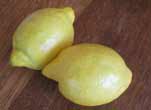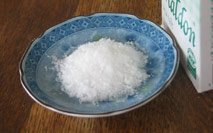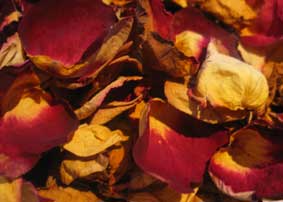Do Really Safe Chemical Cleaners Exist?
- what makes some cleaners unsafe - for us and the environment?
Safe chemical cleaners? Is this an oxymoron?
There are thousands of products on the market that clean and shine our homes. Many of them are fairly toxic, that is some of the ingredients included are toxic, to a degree - to us, to the environment, or both.
Are we stuck with this?
Is this a fair trade-off that we just have to accept for the sake of good hygiene?
And what's wrong with these products, anyhow? Are they all so bad - or are some of them acceptably safe for us to use regularly?
Here we try to draw a distinction between the safe and the not-so-safe and outline just what it is that makes some products unsafe.
Safe chemical cleaners are everywhere

The good news about safe chemical cleaners is that they are everywhere!
There are lots of safe chemical cleaners and you've probably got some in your cupboard already. In fact, some of them are probably in your food cupboard.
Products such as vinegar, sodium bicarbonate, washing soda and salt are all safe chemical cleaners.
They are all "chemicals", in that they all have a chemical structure. Salt for example, is NaCl or sodium chloride. No-one is afraid of salt! We aren't exactly anxious about its effects upon our health, except for when we use it to excess in our diets.
Some common foods such as lemons and other citrus fruits can also be used safely. They contain naturally occurring chemicals such as limonene.
The point is that not all chemicals are dangerous or detrimental to the environment. Many chemicals are relatively harmless when used correctly. (But even salt can be harmful in the wrong place, or in excessive amounts. Salt used to prevent ice on roads can have a bad effect on local vegetation, for example.)
However, we're being bombarded with hundreds of new, complex chemicals. Every year more are licensed for sale. Although there are stringent tests conducted by laboratories, there are still a good many issues to raise concern.
So, what is in these products to raise concerns? And what are the effects of these chemicals?
Safe chemical cleaners
Not-so-safe chemical cleaners
Here are some of the problems associated with chemical cleaners. I'm talking about the complex kind that you buy in the supermarket with the whizzy sales pitch from a well-funded advertising campaign.
(For more on safe chemical cleaners please see the links in Green Clean. There you'll find information on many of the commoner green cleaning products.)
Direct health effects
Some cleaning products contain toxic chemicals, which not only kill aquatic life but also harm humans. Ammonia and sodium hypochlorite can irritate the lungs, for example. They are not recommended for people with heart conditions and chronic respiratory problems.
Some cleaning products may contain parabens as preservatives. This group of chemicals has been found in breast tissue and has been linked with cancer.
Many people may be exposed to these chemicals unwittingly.
There is also an issue with combinations of cleaning products. Household bleach, for example, can be extremely toxic when combined with other products.
Air pollution
Some cleaning materials contain VOCs (volatile organic compounds). VOCs are common in industry - some, such as methane, are also greenhouse gases. The term is a blanket catch-all phrase for chemicals which release damaging gases into the atmosphere. These can contribute to photochemical smog and ozone depletion. From a health viewpoint they are also dangerous.
The levels of VOCs in indoor air can be up to 10 times greater than levels outdoors according to the US Environmental Protection Agency (EPA).
They are found in many aerosol sprays, cleansers and disinfectants, moth repellents and air fresheners.
Water pollution
Some components of cleaning products break down slowly or incompletely and may harm plants, animals and micro-organisms that live in water systems. Some artificial fragrances are in this category.
Many common cleaners contain ammonia. Ammonia and other ingredients in cleaners may not be removed by water processing at the sewage farm.
Some ingredients such as nitrogen cause excessive growth of some kinds of plant. Very often this alters the natural balance and other plants suffer as a consequence. Sometimes algae grow which suppress other plants and reduce animal life too. The algal "blooms" can then die back leaving an almost dead water course.
See this page on water pollution for more on this.
Indirect pollution
The manufacture of ingredients can involve toxic releases of chemicals as a by-product of the manufacturing process. For example, every factory uses oil products. Oil extraction and refining processes release benzene and other toxic chemicals into the environment.
Benzene is a known carcinogen. It is still added to petrol in the US and Europe, despite its health effects, because of its "anti-knock" properties.
Benzene may also be involved in the manufacturing process of household chemicals as it is a oil derivative which has many industrial uses.
Natural cleaning materials such as vinegar and washing soda may still involve the use of oil products as fuel in their production and distribution. However most natural cleaners have a far smaller toxic footprint, as the manufacturing processes are relatively straightforward.
Sponsored links
More expense - cleaning up the cleaners!
Chemicals contained in cleaners get into municipal solid waste (MSW) systems. Water companies are having to spend money and develop systems to cope with the increased toxic load of chemicals in sewage.
After all, all those cleaning fluids get rinsed away, sooner or later.
Packaging and recycling
The packaging of cleaning products has a big environmental impact. Excessive packaging and non-refillable containers contribute unnecessary waste to landfills and incinerators. The production of packaging has its own carbon footprint.
Eco-friendly cleaning products tend to be much more conservative in their use of packaging, using mainly recycled and recycleable materials where possible.
The benefits of really safe, green cleaning materials
So, using safe chemical cleaners instead of standard chemicals gives a host of benefits.
Some of the greatest benefits of using green cleaning materials are from things that don't happen.
If you use environmentally-friendly cleaners you are putting far less stress onto our fragile planet's ecosystems.
You are also benefiting your own health and well-being, because you are not asking your system to continually de-tox from an excessive chemical load.
Please add any good non-toxic cleaning tips and recipes you use so that other readers can benefit. Just click here.
Read on below the ads for some good books on safe cleaning.
Safe cleaners and cleaning - some good books
Here are some of the best books about cleaning without using harsh chemicals. Most of the ingredients are easy to source and are very safe. Best of all you know that you are not harming the environment - or your family's health.
Better Basics for the Home: Simple Solutions for Less Toxic Living This book has received great reviews. It's easy to use and has many simple recipes for a host of cleaning tasks. There are also some skin care recipes.
Clean House Clean Planet This is a well-regarded work that covers all the basics of natural home cleaning. The author even rates her recipes for effectiveness. There are plenty of good recipes with easy-to source ingredients.
The Naturally Clean Home: 150 Super-Easy Herbal Formulas for Green Cleaning This one, as the name suggests, focuses on herbal ingredients for home cleaning. These are often in the form of essential oils. Again, there are plenty of effective recipes for all of the common home cleaning problems we face.
*****
Sponsored links
Do Safe Chemical Cleaners Exist? TOP
Natural Household Cleaners
Greenfootsteps Home - for more easy green living ideas
Are There Any Really Safe Chemical Cleaners?
Copyright Greenfootsteps.com 2010
| Tweet |

| Tweet |

On other pages

Make an Aromatherapy Air Freshener

Sponsored links
Footprints
- an occasional e-zine from Greenfootsteps
If you would like to receive the e-zine, please just sign up below.






New! Comments
Have your say about what you just read! Leave me a comment in the box below.